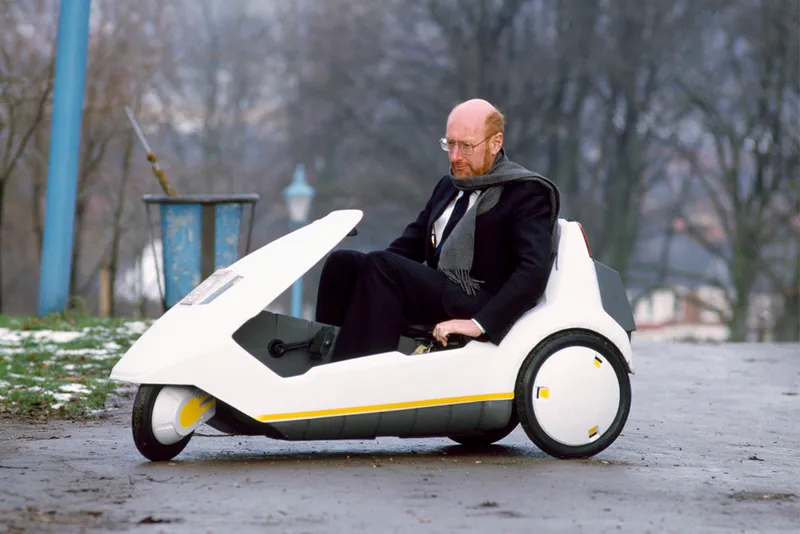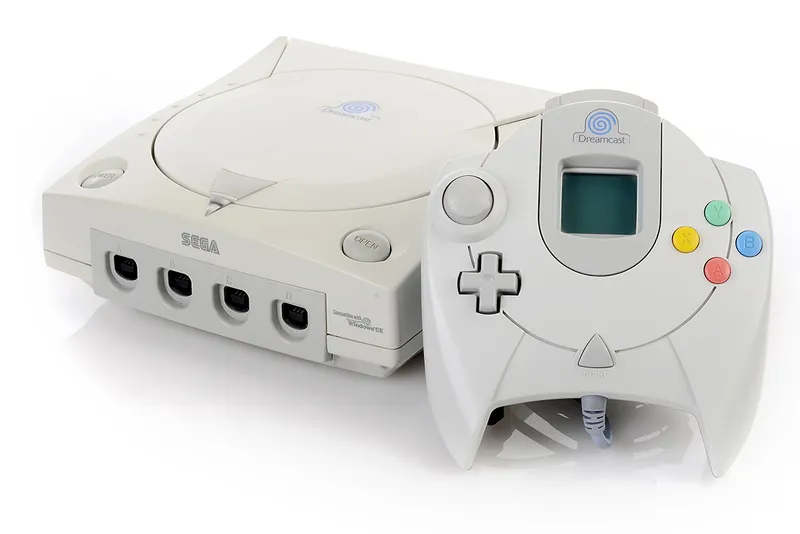Look around your home and you'll see countless amazing inventions that have all made our lives easier – you are reading this on one right now.
However, not all inventions are well thought-out and useful. Some are not fit for purpose, while others are as functional as a woollen submarine. Some are born with good intentions, others are created to fill a niche that doesn't exist in the hope of making a bit of dosh.
The parachute coat

Franz Reichelt was a tailor by trade, but in the early days of powered human flight, he was inspired to design a suit that could be used as a parachute by pilots. After initial tests using dummies, he was so sure his design would work that in 1912 he decided to test it by jumping from the lower level of the Eiffel Tower in Paris, France.
Sadly for Franz, his design failed to work and he fell to his death in a matter of seconds. However, thanks to pioneering spirits like this we now have wing suits used for base jumping, as well as parachutes and ejector seats for pilots.
Coffee Pods

Coffee pods are one of those inventions that must have seemed like an amazing idea on the drawing board, but in practice, they are incredibly wasteful. Even their inventor, John Sylvan, regrets inventing them during his time working for coffee maker Keurig Green Mountain.
Studies suggest that the annual global footprint produced by coffee pods is well over half a million tonnes. Some specialist companies will recycle the pods and capsules for you, but you can't recycle them at home. And if put into landfill, they will take 500 years to decompose.
Sinclair C5 electric tricycle

The Sinclair C5 is one of those inventions that was far too ahead of its time. Before its launch, Sir Clive Sinclair had a great reputation as a successful inventor and father of the home computer – the launch of his ZX Spectrum in 1982 revolutionised home computing. But when his Sinclair C5 electric tricycle was launched in 1985, all of that was forgotten.
Amazingly, the C5 could be legally driven on the road in the UK. However, at about 80cm height, every other vehicle tower above it, making it very unsafe.
But that's not all. Battery life was low (with a range of just 20 miles) and the C5 could only achieve a top speed of 24kph (15mph). The reviews were dreadful, sales were poor, and Sinclair's reputation lay in tatters.
Now that battery technology has caught up, had the Sinclair C5 been launched today there is every chance it could be far more successful.
Pop-up advertisements

Pop-up ads are synonymous with bad internet browsing experiences. However, they were originally designed to actually help internet users, not hinder them. They were invented by Ethan Zuckerman, who had developed pop-up boxes as a way of advertising on web pages without directly implying an association between advertising and the contents of a web page.
Zuckerman has since apologised profusely for this incredibly annoying invention, writing that his "intentions were good".
Hydrogen airships

In the days before transatlantic flights on jet aircraft, if you wanted to travel over long distances you would be restricted to sea travel. But with the advent of powered flight in the early decades of the 20th century, travelling around the world quickly started to look like an exciting possibility. Air balloon technology had also improved dramatically and was becoming widespread as a means of transport.
Many companies produced airships, but it was the emergence of the Zeppelin company that saw massive growth in their popularity. Zeppelin had a great idea – equip an airship with a luxurious cabin and fly people across the Atlantic Ocean quickly and comfortably. During the late 1920s and early 1930s, this become a popular means of getting from Europe to the USA.
What was less of a good idea was to fill these balloons with highly explosive hydrogen gas. Accidents were fairly common, but the visibility of the Hindenburg disaster of 1937 (which saw 36 people lose their lives when the airship exploded as it landed) ended the age of the airship in one fell swoop.
By the time of the disaster, aircraft design was already catching up, and airships as a means of long-distance travel suddenly seemed very slow and incredibly dangerous.
However, the airship could soon make a surprising return. Companies like Euro Airship and Flying Whales plan on launching new environmentally-friendly airships that can circle the globe while using an estimated 80 per cent less fuel than planes. And before you ask: no, they're not filled with hydrogen, but non-flammable helium.
Read more:
SEGA Dreamcast

For those of us of a certain age, the name SEGA still conjures up images of late nights trying to complete Sonic the Hedgehog before bedtime. But by the time the Dreamcast came along in 1999, SEGA was already starting to look like a shadow of their former selves.
SEGA's previous generation console the SEGA Saturn had been a disaster thanks to Sony's Playstation massively moving the goalposts and undercutting the Saturn when it launched in 1995.
The Dreamcast looked good on paper, with an innovative controller and online gameplay. But a lack of third-party titles and the launch of Sony's all-conquering Playstation 2 sounded the death knell of SEGA as a console manufacturer in 2001.
Other notable failures within the computer console genre include Apple's Pippin in 1996. Yes, Apple made a game console, and it was considered truly dreadful by many – costing $599 (equivalent to $1,100 or £860 in 2022), the machine came with a 66MHz processor (that's about 7,000 times less powerful than a modern Apple computer).
Chewing gum

Although chewing gum has existed for thousands of years, the modern version has been with us since 1848, when the first commercial chewing gum went on sale. Flavourings were soon added in the 1860s to boost its appeal, but the real boom-time was in the 20th century. It could be found everywhere from the underside of school desks to the mouths of many a football manager.
One of the main ingredients in modern gum is polyvinyl acetate, a kind of plastic that is very difficult to remove when it comes into contact with things like shoes and pavements. And this also makes it very time-intensive and expensive to remove.
Thankfully, a new generation of plastic-free chewing gum has started to appear, meaning that you no longer need to feel so guilty about having a good chew.
Read more:
Betamax video

Most bad inventions fail because they are ill-thought-out. But in the world of home video systems, Sony's Betamax system was in fact miles better in terms of picture quality when compared to its rival Video Home System (VHS). However, it sold poorly in comparison due to the adoption of VHS by the adult film industry, as well as the higher cost of the system.
Despite launching in 1975, Sony only stopped producing Betamax tapes in 2016, making it a very curious example of a relatively unsuccessful product with a very long life.
Plastic carrier bags

When invented by Swedish engineer Sten Gustaf Thulin in 1965, the plastic bag was believed to be an item that could be continually reused. However, It would take a lot of effort not to notice that the world today has a massive problem with plastic pollution, with single-use plastic bags still being used in their millions.
Some studies predict that by weight, there will be more plastic in the sea than fish by 2050. Single-use plastic bags kill marine life and they also take centuries to biodegrade when buried in landfill sites.
Thankfully, the number of new single-use carrier bags being issued in the UK has been in decline over the past few years thanks to the introduction of a charge for each bag used. Plus more and more retailers are turning to biodegradable bags to help reduce their impact.
Apple Newton

Paper and pen is a classic combination. But in the early 1990s, Apple decided that what the world needed was a modern take. The trouble was that the resultant Apple Newton tablet was expensive and mostly hopeless. Its handwriting recognition was so poor it became synonymous with overambitious and pointless technology.
These were the lean years for Apple, before the days of the iPod and iPhone. Steve Jobs had been pushed out of the company in 1985 but was brought back on board in 1997. Pretty much his first act was to axe the Newton product line.
Read more: